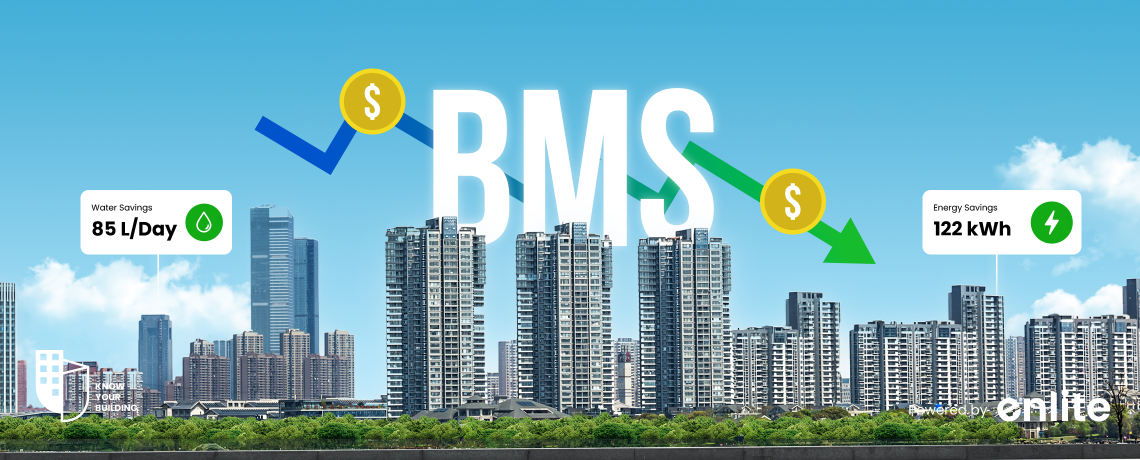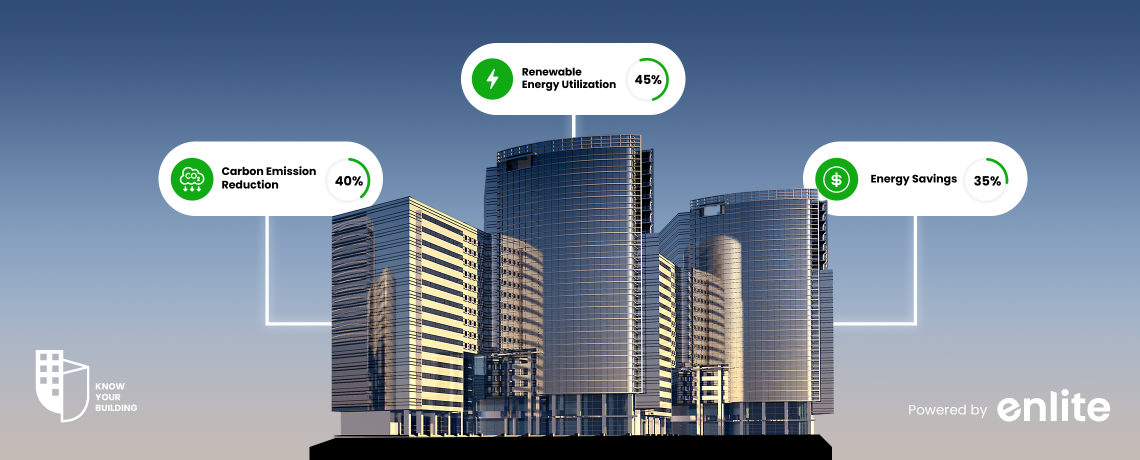Introduction
Building Automation Systems (BAS) have transformed the management of commercial buildings and facilities by offering efficient control and monitoring of various building systems. With the ability to regulate heating, ventilation, air conditioning, lighting, security, and energy management, BAS streamline operations, improve occupant comfort, and optimize energy usage. Selecting the most suitable system for your building is of utmost importance to achieve optimal performance, cost savings, and long-term sustainability. A well-chosen BAS not only enhances operational efficiency but also contributes to a greener environment by reducing energy waste. By considering factors such as scalability, integration capabilities, energy efficiency, user interface, and support, building owners and facility managers can ensure the successful implementation of a BAS that aligns with their specific needs. In this blog, we will explore the importance of choosing the best building automation system and the benefits it can bring to your organization.
Definition and Components of Building Automation Systems
Building Automation Systems (BAS) are complex networks consisting of interconnected devices, sensors, and software designed to automate and control various functions within a building. These systems play a crucial role in optimizing building operations, enhancing occupant comfort, and improving energy efficiency.
Let’s delve into the key components that make up a typical BAS:
Sensors: Sensors are fundamental to BAS as they detect and collect data on various environmental variables such as temperature, humidity, occupancy, air quality, and lighting levels. These sensors provide real-time information to the BAS, enabling it to make informed decisions and adjustments.
Controllers: Controllers serve as the brains of the BAS. They receive data from the sensors, process it, and make decisions based on predetermined algorithms and setpoints. Controllers are responsible for initiating actions and sending commands to the actuators.
Actuators: Actuators are devices that respond to control signals from the controllers. They carry out the physical actions required to control the building systems. For instance, actuators can open and close valves in the HVAC system, adjust lighting levels, regulate blinds, or control access points.
User Interface: The user interface is the interface through which users interact with the BAS. It typically includes a graphical interface that allows users to monitor and control the system, set schedules, configure settings, and access data and reports. User interfaces can be accessed through dedicated control panels, web-based applications, or mobile apps, providing convenient access to the BAS from anywhere.
These components work together seamlessly to create an interconnected network that enables automation, control, and monitoring of various building systems. The sensors gather data, which is processed by the controllers to make decisions and send commands to the appropriate actuators. The actuators then carry out the necessary actions to maintain optimal conditions and meet predefined goals. By integrating these components, a BAS empowers building owners and facility managers with the ability to achieve energy efficiency, optimize comfort, enhance security, and streamline operations. The centralization and automation provided by BAS offer immense benefits in terms of energy savings, operational efficiency, and occupant satisfaction.
Benefits of Building Automation Systems
Implementing a high-quality BAS offers numerous advantages for building owners, facility managers, and occupants. Some key benefits include:
Energy Efficiency: BAS optimize energy consumption by enabling precise control and scheduling of HVAC, lighting, and other systems. This leads to reduced energy waste and lower utility costs.
Comfort and Productivity: BAS maintain optimal environmental conditions, ensuring occupant comfort and productivity by adjusting temperature, humidity, and lighting levels according to preferences and occupancy patterns.
Operational Efficiency: Centralized control and automation streamline facility management tasks, including maintenance, troubleshooting, and reporting. This improves operational efficiency and reduces the need for manual intervention.
Enhanced Security: BAS integrate security systems, such as access control, surveillance cameras, and alarm systems, providing comprehensive protection for the building and its occupants.
Sustainability: By optimizing energy consumption and reducing environmental impact, BAS contributes to sustainable building practices and helps organizations achieve their sustainability goals.
Factors to Consider When Choosing a Building Automation System
When selecting a building automation system (BAS) for your facility, several factors must be carefully considered. These factors play a crucial role in determining the system’s compatibility, performance, and long-term value. Here are key factors to evaluate during the selection process:
Scalability and Flexibility
Consider the scalability of the BAS to accommodate potential future expansions or modifications to your building. A scalable system can adapt to changes in building size, layout, and requirements.Assess the flexibility of the BAS in terms of its ability to integrate additional devices, sensors, and systems as your needs evolve. It should support interoperability and compatibility with a wide range of technologies and protocols.
Integration Capabilities
Ensure that the BAS can seamlessly integrate with various building systems such as HVAC, lighting, security, fire safety, and energy management. Integration capabilities enable centralized control and monitoring of multiple systems from a single platform.
Verify compatibility with industry-standard protocols like BACnet, Modbus, or LonWorks. This ensures interoperability and simplifies integration with existing systems or future expansions.
Energy Efficiency
Look for BAS features that optimize energy usage, such as occupancy-based scheduling, demand response capabilities, and real-time energy monitoring. These features allow the system to adjust energy consumption based on occupancy patterns and demand, resulting in energy savings.Consider the system’s ability to generate energy reports and provide insights for further energy-saving measures. Energy analytics and reporting tools can help identify inefficiencies, prioritize improvements, and measure the effectiveness of energy-saving initiatives.
User Interface and Ease of Use
Assess the usability and intuitiveness of the BAS interface for both administrators and end-users. A well-designed user interface enables easy navigation, monitoring, and control of the system.Consider mobile accessibility and remote control capabilities. A mobile app or responsive web interface allows users to access the BAS from their smartphones or tablets, enhancing flexibility and responsiveness.Look for features like customizable dashboards, alerts, and notifications. Customizable dashboards enable users to personalize their view, while alerts and notifications keep them informed about critical events or system conditions.
Support and Maintenance
Research the support and maintenance services offered by the BAS provider. Ensure that they provide timely and reliable technical support, including remote troubleshooting and on-site assistance if required.
Consider the availability of training programs and documentation to ensure that administrators and end-users can effectively operate and maintain the system.
Evaluate the provider’s track record in terms of system updates and upgrades. Regular software updates ensure compatibility with new technologies, bug fixes, and access to new features. By carefully evaluating these factors, you can select a building automation system that aligns with your specific needs and goals. Choosing the right BAS is crucial for maximizing operational efficiency, energy savings, occupant comfort, and long-term value for your facility.
The Impact of Choosing the Right Building Automation System
Choosing the right building automation system (BAS) can have a significant impact on various aspects of your facility. Let’s explore the key areas where the right BAS can make a difference:
Operational Efficiency: A well-designed BAS streamlines building operations by automating and centralizing control and monitoring functions. This improves operational efficiency, reduces manual intervention, and minimizes the risk of human error. The right BAS can optimize energy usage, enhance equipment performance, and enable proactive maintenance, leading to cost savings and increased productivity.
Energy Savings: Energy efficiency is a top priority for building owners and facility managers. By selecting a BAS with advanced energy management features, such as demand response capabilities, occupancy-based scheduling, and real-time energy monitoring, you can significantly reduce energy waste. The right BAS enables you to identify energy-saving opportunities, implement effective strategies, and track energy consumption, leading to substantial cost savings and environmental sustainability.
Occupant Comfort and Productivity: A comfortable and productive environment is essential for building occupants. The right BAS allows you to maintain optimal conditions, such as temperature, lighting, and air quality, based on individual preferences and occupancy patterns. This enhances occupant comfort, satisfaction, and productivity, creating a positive and conducive work or living environment.
Enhanced Security and Safety: A comprehensive BAS integrates various security systems, such as access control, video surveillance, and fire detection. By choosing a BAS with robust security features, you can enhance building security, monitor critical areas, and respond quickly to emergencies. Integration with fire safety systems allows for early detection and rapid response, minimizing potential risks and protecting occupants and assets.
Cost Savings: Investing in the right BAS can yield significant cost savings in the long run. Through improved energy efficiency, reduced maintenance needs, and optimized operations, a well-designed BAS helps lower operating expenses. Moreover, proactive maintenance enabled by the BAS minimizes downtime, extends equipment lifespan, and reduces repair costs.














